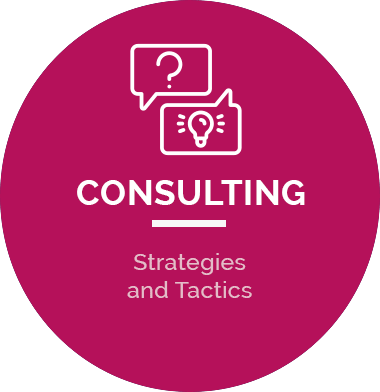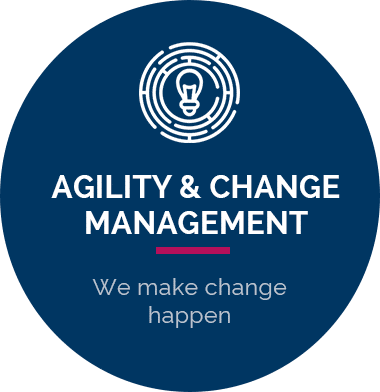Cross Internal Communication Services
Internal Communication Consulting Agency

We analyze the situation. Recognize the needs. Seize opportunities. Create a map. Optimize resources. We push the limits of possibilities.

We design and execute content, campaigns and activations that generate a sense of belonging and mobilize teams.

Organizational design, conversations, trainings and agile methodologies to promote cultural and digital transformation.
What is Cross Communication?
We are much more than Internal Communication Consultants.
We know how to make changes happen because our service and our commitment are from beginning to end
Cross communication consists of systematically managing consistency between culture and communication.
Is to align both, internal and institutional communication, in order to build a unique and powerful identity that achieves great results.
It’s to have a strategy that generates positive transformations throughout the entire organization.
Consulting
Strategies
and Tactics
We analyze the situation. We recognize what is needed. We seize opportunities. We create a map. We optimize resources. We push the limits of possibilities. We co-create and accompany the internal communication strategy and planning, focusing on the needs of the business, leadership and Internal Communication representatives.

- Survey of business needs with internal communication and human recurse representatives.
- Digital employee survey.
- Strategic support focused on new trends and change management.
- Assembly of an Internal Communication advocacy committee.
- Identification of milestone dates, special days and projects.
- Annual planning and scheduling of activities. Calendar follow-up and proactivity.
- Strategic planning of campaigns and follow-up.
- Proposals for activations.
Comunication Agency

We design and produce content, campaigns and activations that generate a sense of belonging and mobilize teams and audiences.
We help develop strategic and systemic communication, nurturing culture and delivering powerful messages that transform behavior.
- Conceptualization, naming and branding of internal campaigns.
- Development of key visuals.
- Internal logo design.
- Creativity and digital innovations.
- Narrative development.
- Production and coordination of campaigns, graphic and digital material, podcasts, virtual events, gamification, merchandising, videos, training environments and content.
- External communication: digital marketing and press.
We design and produce content, campaigns and activations that generate a sense of belonging and mobilize teams and audiences.
We help develop strategic and systemic communication, nurturing culture and delivering powerful messages that transform behavior.

- Conceptualization, naming and branding of internal campaigns.
- Development of key visuals.
- Internal logo design.
- Creativity and digital innovations.
- Narrative development.
- Production and coordination of campaigns, graphic and digital material, podcasts, virtual events, gamification, merchandising, videos, training environments and content.
- External communication: digital marketing and press.
Agility & Change Management
Organizational design, conversations, training and agile methodologies to enhance cultural and digital transformation.
We facilitate conversations and provide training because we believe in the value of getting together and learning together.

- Technological culture, OKRs, Management 3.0.
- Agile methodologies like Scrum and Kanban.
- Design Thinking y Lean Startup
- Lean Change Management
- Workshops for leaders: remote team leadership, effective meetings, horizontal leadership.
- Communication workshops: strategic planning, writing, development of key messages, storytelling, public speaking, media training, effective presentations, social media.
- Key topics: diversity, inclusion and sustainability, employer branding, mergers, transformations, change management, productivity, among others.
Success Stories
We know how to make changes happen because our service and our commitment are from beginning to end.
Why is it important to have an internal communication strategy?
Every organization, whether big or small, must have an internal communication strategy and a long-term plan because it helps generate employee engagement while boosting productivity and improving teamwork. Despite this, 60% of companies lack a communication strategy.*
- Helps to transmit and consolidate the organizational culture.
- Facilitates change and transformation processes.
- Conveys the organization’s strategic objectives, achievements, and challenges.
- Allows each member to express themselves.
- Promotes participation at all levels.
- Creates a climate of trust and commitment.
- Improves external image and reputation.
- Increases talent attraction and retention.
Internal communication is an indispensable strategic element so that all members of the organization can enjoy a shared vision.
*Study conducted by international insurance broker Arthur J. Gallagher & Co.
Why our clients trust us

Valeria Abadi
ARCOR
Corporate Manager of Institutional Communication

Soledad Veiga
ARCOS DORADOS
Head of Corporate Internal Communications

Fernando Arango
McDONALD’S ARGENTINA
Manager of Corporate Communications
Top 8 most frequently asked questions about internal communication
What is internal communication in a company?
It is the set of actions, processes, and channels that facilitate information flow across levels and departments, ensuring all employees are aligned with strategy and goals.
What is the objective of internal communication in a company?
The goal is to ensure every person understands their role, feels part of the culture, and has the information needed to perform tasks effectively.
Why is internal communication important in a company?
Because it builds trust, engagement, and a sense of belonging. It also prevents rumors, aligns teams, and improves workplace climate.
What are the benefits of good internal communication?
Higher motivation, productivity, team cohesion, talent retention, and a healthy work environment that boosts business results.
When should an internal communication audit be carried out?
When the company starts a transformation, when failures in information channels are detected, or regularly as a best practice to spot improvement opportunities.
What should be communicated and how?
Objectives, achievements, changes, and relevant news should be shared in clear language tailored to each audience, through strategic channels that encourage participation.
What tools can be implemented for internal communication?
Common ones include intranets, newsletters, corporate apps, collaborative platforms, internal events, and team meetings.
Why is it important to establish two-way conversations?
Because communication is not just about transmitting information but also listening. This fosters trust, innovation, and helps identify real team needs.







